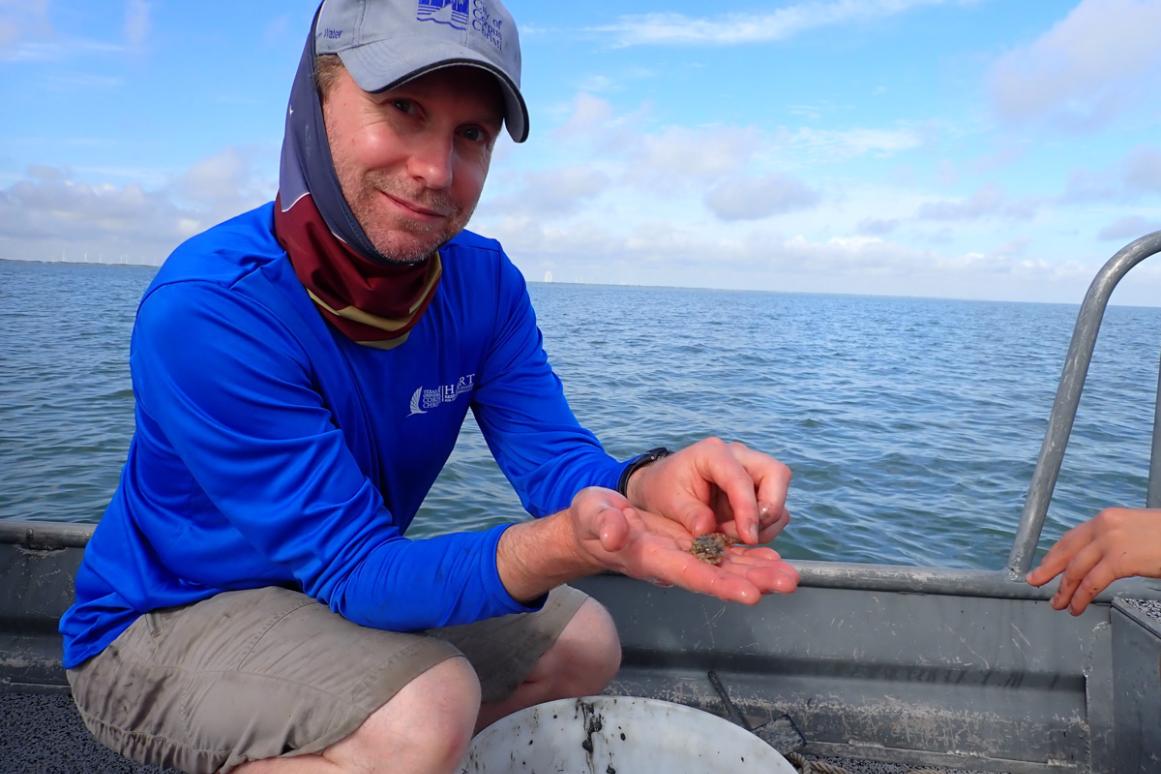Visiting Researcher Benoit Lebreton Comes to HRI to Study Coastal Food Webs

CORPUS CHRISTI – Visiting researcher Dr. Benoit Lebreton spent three weeks at the Harte Research Institute for Gulf of Mexico Studies (HRI) at Texas A&M University-Corpus Christi in June collaborating with members of the Coastal Conservation & Restoration Lab under HRI Chair Dr. Jennifer Pollack.
Lebreton is an associate professor at the Joint Research Unit Littoral, Environment and Societies, at the University of La Rochelle in La Rochelle, France. These recent weeks weren’t the first that he’s spent at HRI. Lebreton earned his PhD in marine ecology in 2008 and was then a postdoctoral research associate at HRI in 2010 through 2011. Following his time at HRI, he was a postdoctoral research associate at the Alfred Wegener Institute for Polar and Marine Research at the Wadden Sea Station Sylt in Germany in 2012.
Lebreton studies the structure and functions of coastal ecosystems with a primary focus on food webs and relationships between producers and consumers. He also studies the flows of organic matter in the continent-ocean continuum to determine how changes in these flows can affect the functioning of coastal ecosystems and the ecosystem services that the marine food webs can provide to human societies.
To study these relationships, Lebreton employs trophic markers (a marker relating to an organism’s nutrition or feeding habits) like stable isotopes, such as carbon and nitrogen isotope compositions, and fatty acids to study marine food webs.
“Benoit brings incredible knowledge to HRI that benefits our research programs and our students,” said Dr. Pollack. “Benoit’s expertise in using stable isotope analysis to understand the structure and functioning of estuarine and marine ecosystems across the globe strongly supports the HRI mission to provide science-based solutions to solve Gulf of Mexico problems.”
In June Lebreton worked with the Coastal Conservation & Restoration Lab to study the food resources needed by reefs, including oyster reefs in Coastal Bend bays and serpulid worm tube reefs like those in Baffin Bay. These reefs, and their food resources, can support biodiversity that serves as an overall indicator of reef health.
“If there aren’t the right food resources for oysters or worms, we lose the oysters, we lose the worms, and then we lose all kinds of ecological functions that support other, larger species in these reef ecosystems,” Lebreton said.
Lebreton says that by better understanding the relationships between producers and consumers in these areas, researchers can better learn how to rebuild reefs like those developed by HRI’s Sink Your ShucksTM Oyster Recycling Program.
“We can look at quantities of phytoplankton, for example – if there are high quantities here, let’s put oysters here as these are a food source for oysters,” Lebreton explained. “We can also look at some algae that are living in the bottom of the bays, in the sediments, these are also important food resources.”
While Lebreton says that there are many differences between European coastlines and ecosystems in the Gulf of Mexico, he says that what is the same is that microalgae and other tiny organisms, those that may not get the same headlines as larger fish or brightly colored corals, are worth our attention and serve as major players in the food web.
“The average person can see the coral, they can see the fish, but everything is lost without the things that we don’t see,” Lebreton said.
Through work like Lebreton’s, researchers can better understand how to improve and keep these ecosystems healthy for years to come.
